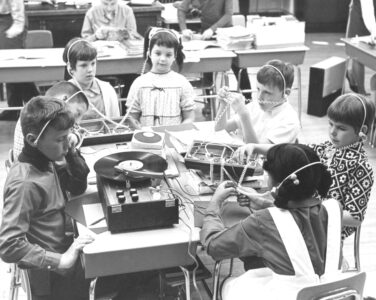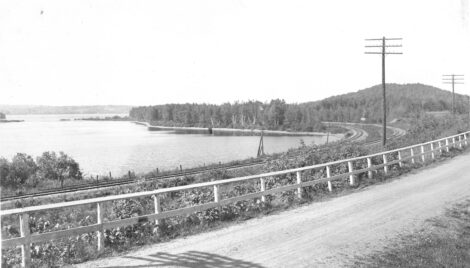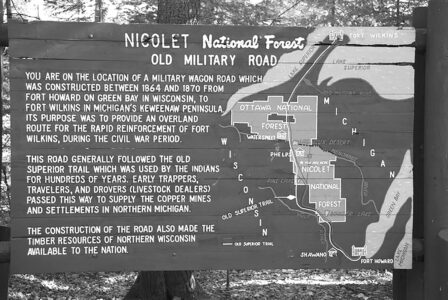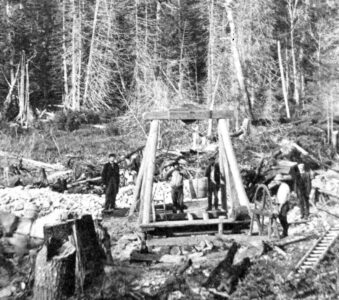Recalling John D. Pierce School

Teacher Virginia Hintsala and children construct a model of an atom for a unit on atomic energy. (Photo courtesy of the Marquette Regional History Center)
MARQUETTE — Northern State Normal School (now Northern Michigan University) opened in 1899 to educate teachers. Thirty-two students studied under a faculty of six. Attendance in 1900-01 was 158. Most of the students were from Michigan’s Upper Peninsula and were already teachers. They took classes in the summer to earn their certificates.
Northern students began practice teaching at the Third Street school in 1900. Northern started the city’s first kindergarten there. Student teachers spent time observing the classrooms, preparing lesson plans, and teaching the children. This was done under the supervision of a “critic” teacher.
The laboratory school grew to 300 students in the lower grades circa 1915, and a high school was started in 1917. By 1922 the state Board of Education added at least twelve hours of supervised practice teaching to the requirements for obtaining a teaching certificate.
A dedicated laboratory school for Northern students to practice teaching, John D. Pierce School, opened in 1925. Students paid tuition to attend grades 7-12. Many of the students were the children of faculty and staff. The school also tried to recruit low-income students.
Physically attached to Northern, the school was named after Michigan’s first superintendent of public schools. Pierce had been appointed in 1836 and was influenced by study of the Prussian system of education with components such as graded schools, grouping by age not knowledge, and tax funded compulsory attendance. He was quoted as saying, “Universities may be highly important and academies of great utility, but primary schools are the main dependency.”
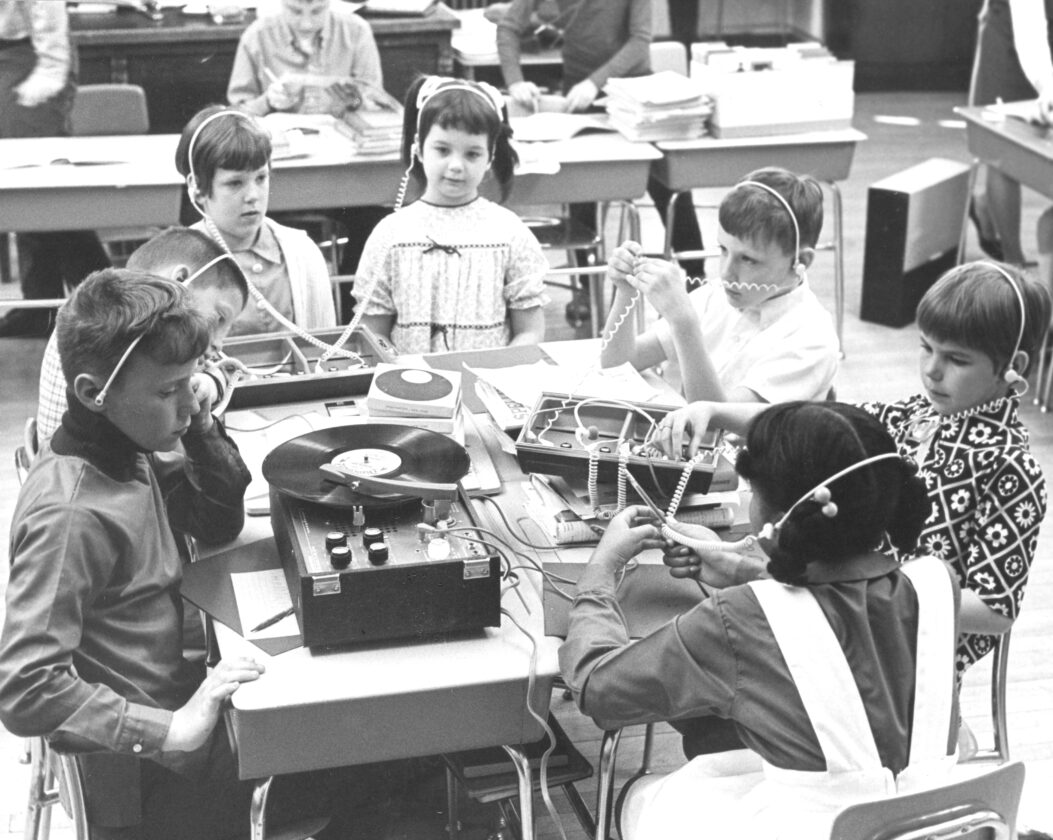
Students are seen listening to a phonograph record as a part of a reading program. (Photo courtesy of the Marquette Regional History Center)
The school was experimental in some ways. Northern added a graduate program in 1960 which led to many research projects at Pierce. University professors in education and other departments also conducted research. Around the 1960s, students did not receive report cards until seventh or eighth grade. They also attended summer school in the morning, for six weeks. Both boys and girls took home economics and industrial arts together.
Research projects included teaching French in kindergarten through eighth grades, using television to demonstrate class lessons, and using data processing to save teachers time on grading. Early elementary students marked their answers on IBM cards, for instance, and the cards were corrected by computer.
The students benefited by Pierce being physically attached to Northern: students used the typing classroom, the stage, science labs, the gym, the swimming pool, and audio-video equipment. Besides the critic teacher, there would be up to five or six student teachers per classroom, which gave the students more individual attention. There was also a sense of being connected to something larger and grander:
“When I was young, I didn’t really understand the building at the end of the hallways. It was just amazing to me and kind of mysterious that if you walked down Pierce’s hall far enough, suddenly you were in this big place with offices and marble staircases and a large auditorium.”
— Former J.D. Pierce student
- Teacher Virginia Hintsala and children construct a model of an atom for a unit on atomic energy. (Photo courtesy of the Marquette Regional History Center)
- Students are seen listening to a phonograph record as a part of a reading program. (Photo courtesy of the Marquette Regional History Center)


